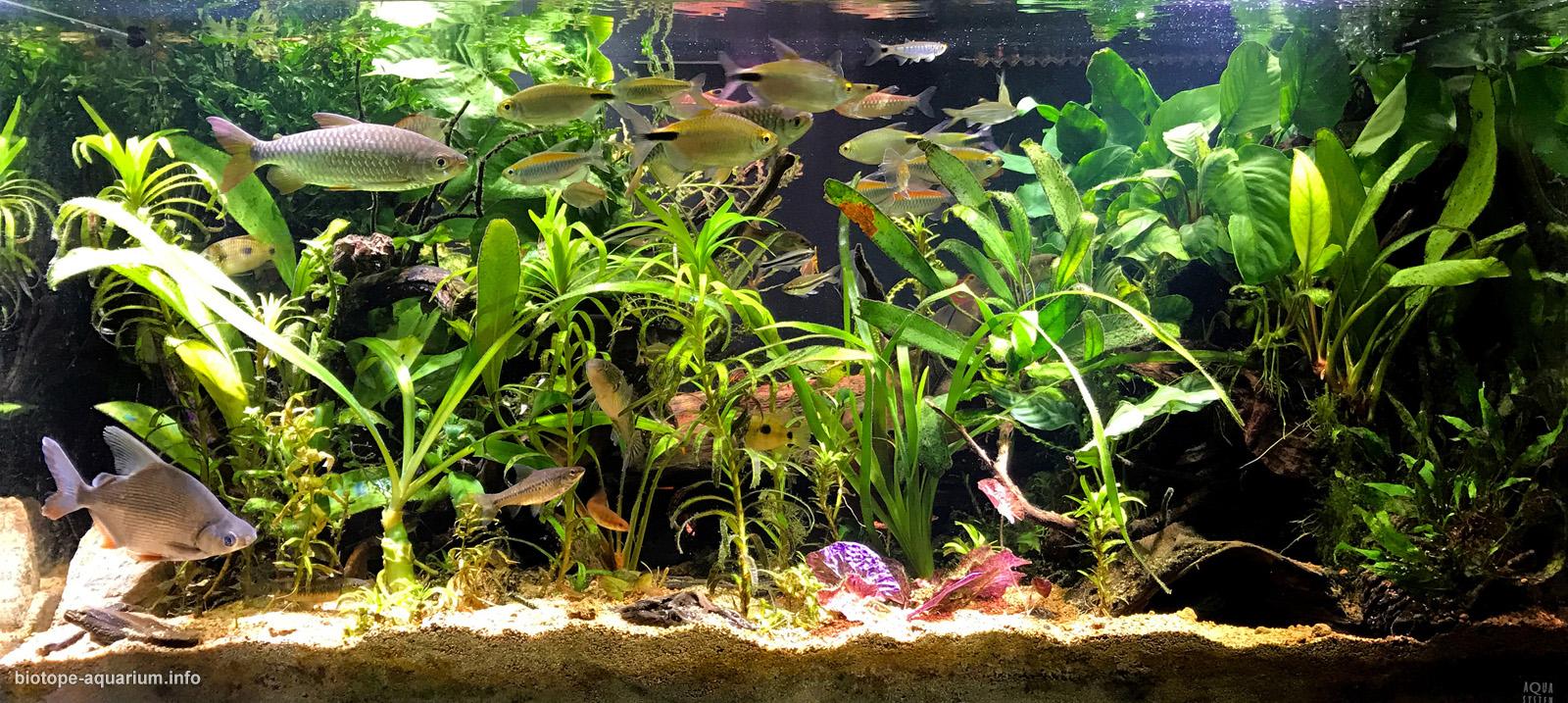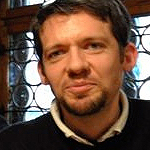Congo River Basin, West Africa
83rd place in Biotope Aquarium Design Contest 2016
![]() Japan. Hideaki Matsubata
Japan. Hideaki Matsubata

Aquarium Volume: 180 L
Fish and invertebrates: Pantodon buchholtzi, Xenomystus nigri, Brycinus longipinnis, Brycinus imberi, Arnoldichthys spilopterus, Micralestes acutidens, Micralestes eburneensis, Alestopetersius caudalis, Alestopetersius hilgendorfi, Phenacogrammus interruptus, Bathyaethiops breuseghemi, Brachypetersius altus, Neolebias unifasciatus, Citharinus latus, Distichodus noboli, Distichodus teugelsi, Distichodus rostratus, Raiamas christyi, Barbus fasciolatus, Barbus sp. “Black Rip”, Barbus sp. “Black line”, Labeo cyclorhynchus, Lamprologus mocquardi, Chromidotilapia guntheri, Steatocranus casuarius, Anomalochromis thomasi, Pelvicachromis sacrimontis, Heterotilapia buttikoferi, Congochromis dimidiatus, Microctenopoma fasciolatum, Ctenopoma kingsleyae, Ctenopoma acutirostre, Gymnallabes typus, Chrysichthys ornatus, Hemisynodontis membranaceus, Microsynodontis batesii, Synodontis nigriventris, Synodontis schoutedeni, Monodactylus sebae, Eutropiellus debauwi, Schilbe intermedius, Tetraodon schoutedeni, Aplocheilichthys spilauchen, Dormitator lebretonis, Atya gabonensis
Plants list: Anubias lanceolata, Anubias afzelii, Anubias barteri var. barteri, Anubias barteri var. nana, Anubias barteri var. Coffeefolia, Anubias congensis, Crinum calamistratum, Crinum aquatica, Crinum natans, Nymphaea lotus, Nymphaea sp. “Guinea”, Microsorium sp. “Cameroon”, Eichhornia sp. “Nigeria”, Eichhornia sp. “Guinea”, Plagiochilaceae sp. “Cameroon”, Moss sp. “Cameroon”, Bolbitis heudelotii, Bolbitis sp. “Guinea”, Nesaea triflora, Nesaea crassicaulis
Biotope description: This Aquarium is West Africa River Theme. Inspired by Congo River Basin. Ground is ADA’s colorado sand and Aqua Soil Africana mix. Stone is petrified wood. Water parameter is PH 6.5.
Plants list: Anubias lanceolata, Anubias afzelii, Anubias barteri var. barteri, Anubias barteri var. nana, Anubias barteri var. Coffeefolia, Anubias congensis, Crinum calamistratum, Crinum aquatica, Crinum natans, Nymphaea lotus, Nymphaea sp. “Guinea”, Microsorium sp. “Cameroon”, Eichhornia sp. “Nigeria”, Eichhornia sp. “Guinea”, Plagiochilaceae sp. “Cameroon”, Moss sp. “Cameroon”, Bolbitis heudelotii, Bolbitis sp. “Guinea”, Nesaea triflora, Nesaea crassicaulis
Biotope description: This Aquarium is West Africa River Theme. Inspired by Congo River Basin. Ground is ADA’s colorado sand and Aqua Soil Africana mix. Stone is petrified wood. Water parameter is PH 6.5.

This aquarium deserves special mention since it is absolutely extraordinary… It contains the most extensive collection of West and Central African fish and plants perhaps ever assembled in one tank. Some of these are by no means east to obtain (a few I have never even seen in captivity before) and I am left wondering if the entrant is a fish exporter! The plants look healthy and the Steatocranus have even managed to breed. Now to come to the point: this entry should be renamed “Fish Soup” or maybe “Green Hell”. It is not in any way a biotope, since it includes fish and plants not only NOT found in the same locale within a river system, but mixed from Nigeria, the Congo, Cameroon, Sierra Leone and several other countries – about 45 species of fish crammed like sardines into one 180 liter tank! The 20 plant species are also from several different countries. Under no circumstances would all of these fish and plants be encountered in the same location anywhere in the wild. Moreover they are found in different water parameters, temperature ranges, and water flow conditions. On top of this not only is the tank massively overcrowded, but most of the species are incompatible due to territorial aggression or even being predator and prey to one another. Watch a few minutes of the video and you can see that the African Butterfly fish has chunks of its fins missing where the puffer fish and larger cichlids have bitten it, as do some of the cichlids. A large Chromidotilapia can be seen savagely biting a smaller Nanochromis, a large synodontis biting an Anomalochromis thomasi, and the Xenomystus chasing the smaller tetras and barbs around. The rest are just waiting to be eaten or savagely killed: puffers will bite anything around them, large predatory catfish will eat the smaller cichlids, killis and tetras, the Pantodon will eat the same ones, so will the larger cichlids, so will the Ctenopoma, as will the Xenomystus, and so on. Many of the fish grow far too large to be in such a small tank anyway. So this is really an “Anti-biotope”, it is the opposite of what we are trying to achieve here, and it is a rather cruel torture chamber for most of the unlucky inhabitants. I would urge the owner to please separate all these fish as soon as possible into biotope-correct assemblages in at least 15 different aquariums.
